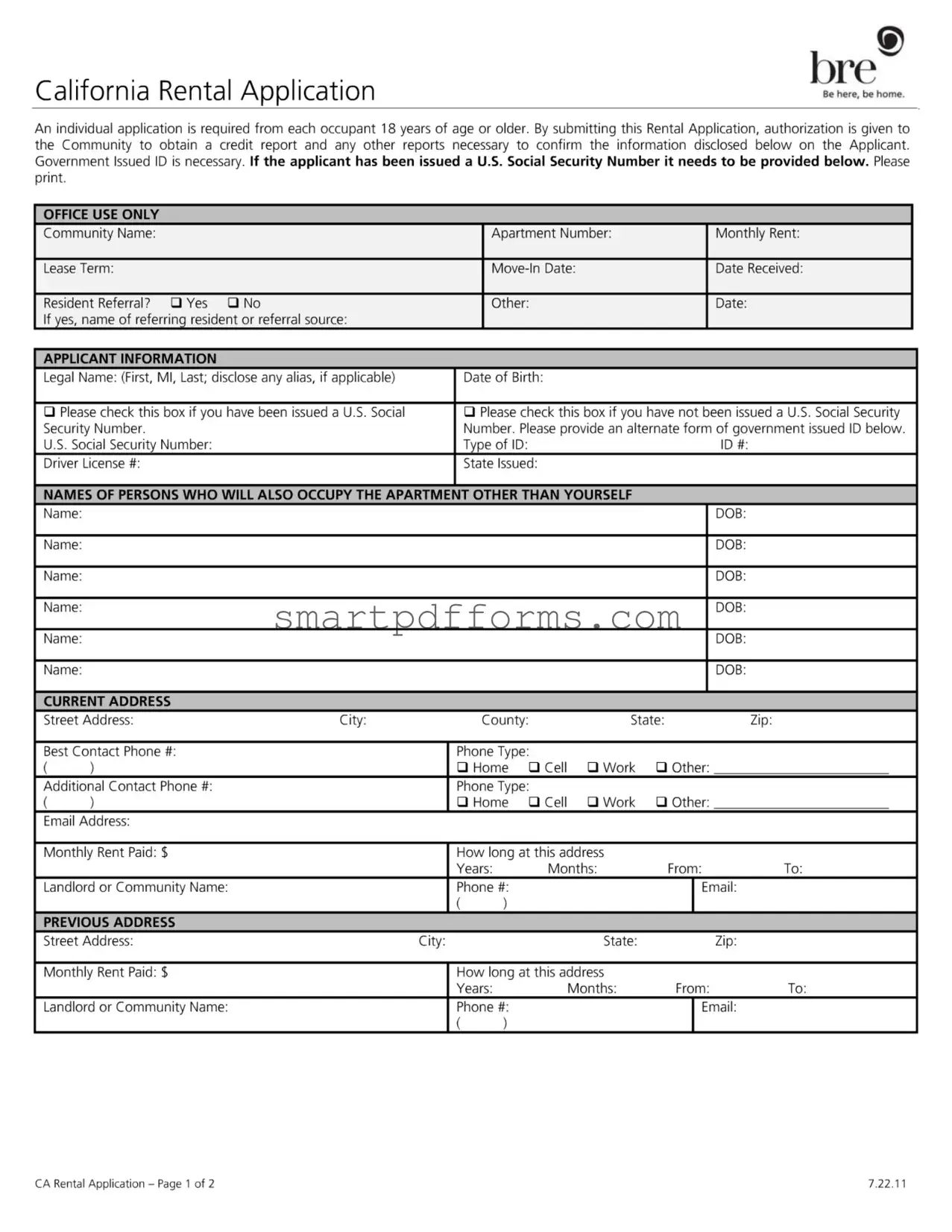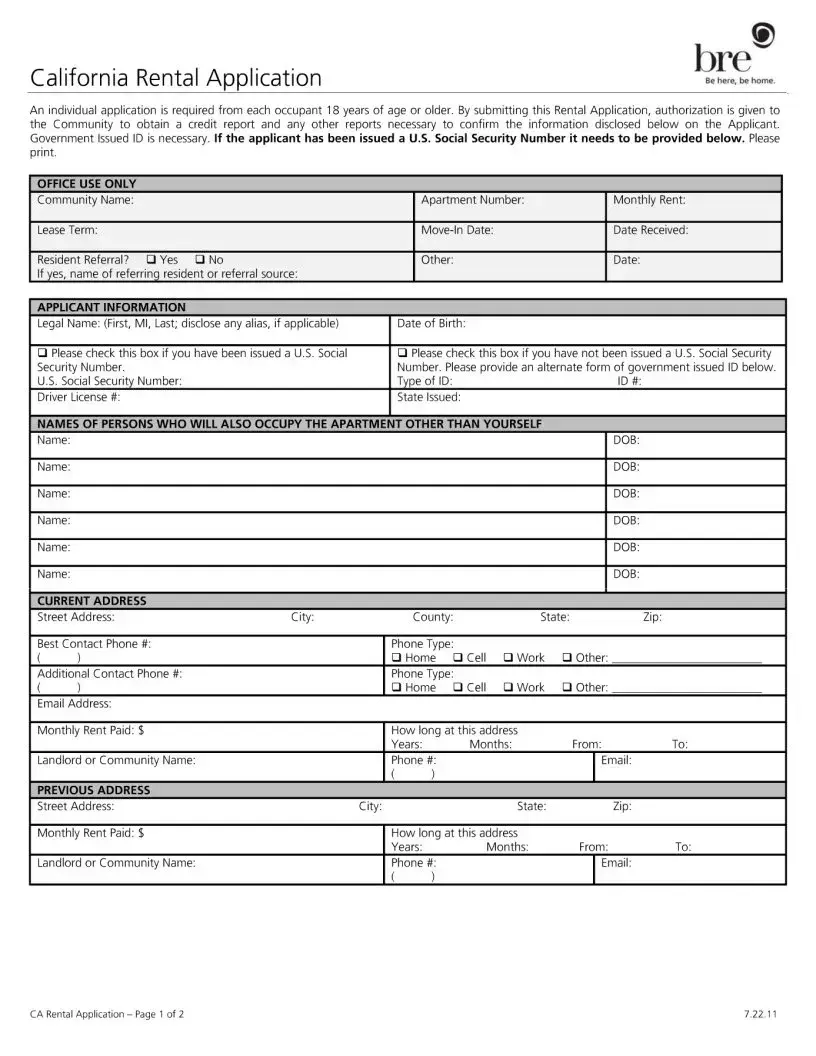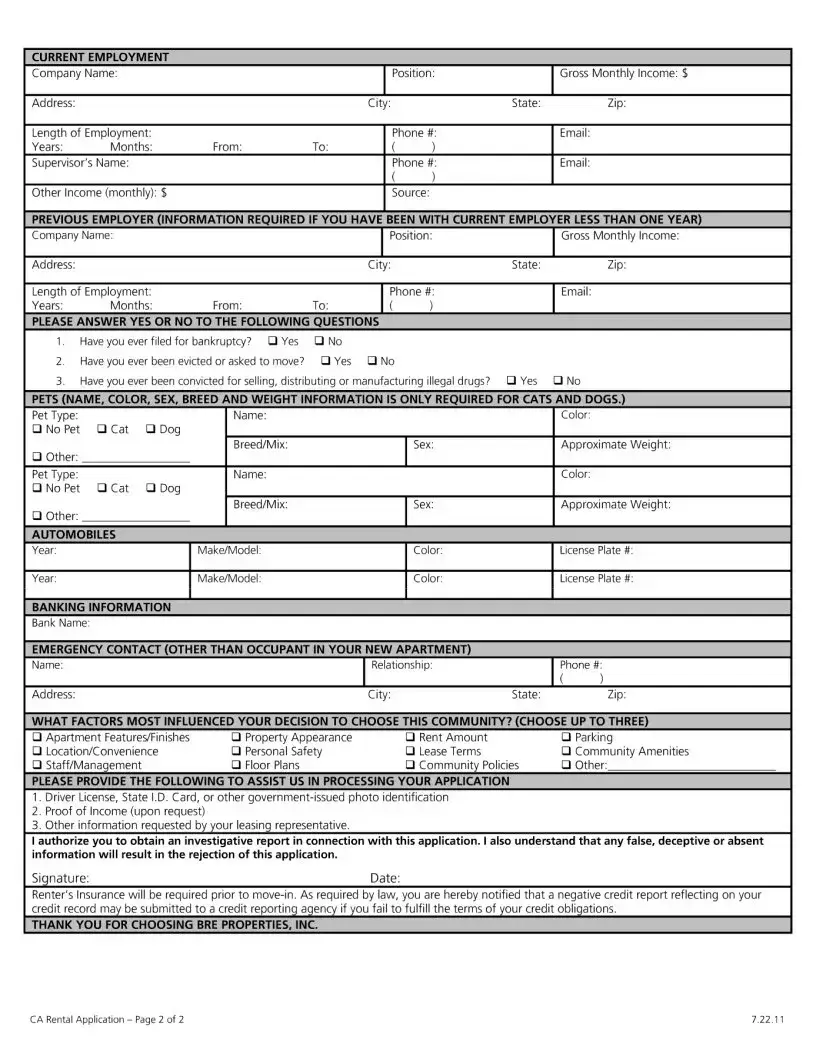What is required for each occupant when submitting a California Rental Application?
Every occupant aged 18 years or older must submit an individual application. This includes authorization for the community to obtain a credit report and any other necessary reports to verify the applicant's information.
Is a government-issued ID necessary for the application process?
Yes, presenting a government-issued ID is necessary. For those with a U.S. Social Security Number, it must be provided. Those without a Social Security Number are required to provide an alternative form of government-issued identification.
What personal information does the applicant need to disclose?
Applicants are required to disclose their legal name, including any aliases, their date of birth, and their social security number if they have been issued one. If not, an alternate form of government-issued ID must be provided.
How does the application process handle occupancy details?
The application requires the names and dates of birth of all individuals who will occupy the apartment, other than the applicant themselves.
What financial information must be provided in the application?
Applicants must disclose their current and previous addresses, monthly rent paid, landlord or community name and contact information, current and previous employment details including company name, position, gross monthly income, and supervisor's contact information. Additionally, other monthly income and banking information must be provided.
Are pets considered in the application process?
Yes, information concerning pets, specifically cats and dogs, such as the type, name, color, breed, sex, and approximate weight are required. For other types of pets, only the pet type needs to be indicated.
What emergency contact information is required?
The application asks for the name, relationship, phone number, and address of an emergency contact who is not an occupant in the applicant's new apartment.
What influences the decision to choose this community, according to the application?
Applicants are encouraged to disclose factors that influenced their decision, such as apartment features/finishes, property appearance, location/convenience, rent amount, parking amenities, and more.
It is important for applicants to provide truthful and comprehensive information, as any discrepancy or omitment may result in application rejection. Additionally, the provision of a driver license, state ID card, or other government-issued photo identification, proof of income, and other information requested by the leasing representative is essential to the application process.


